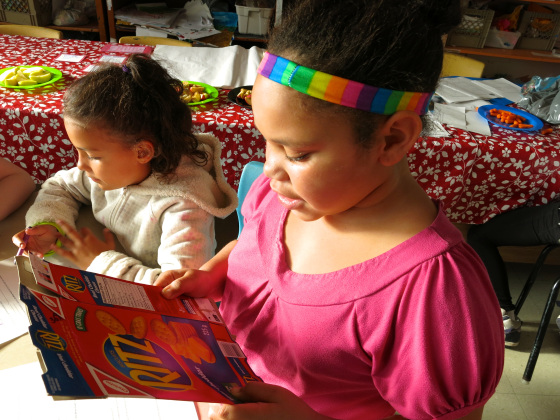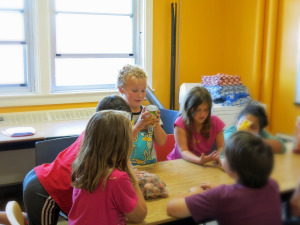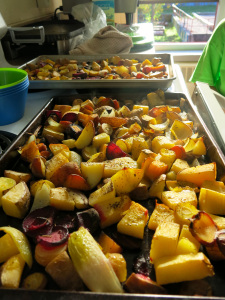Thanksgiving. A time of great food. My favourite food holiday. And in honour of such a great day, I decide to treat myself, the kids, and make some thanksgiving fixings in this week’s sessions of the
That’s a thanksgiving dinner. Everyday. For a week. Anything for the kids ![]()
Besides cooking up some delicious roasted vegetables and apple crisp, we have also been talking about Whole Foods.
What do we mean when we say Whole Foods?
“Cheerios!” suggests one kid ” they say whole grains right on the box”
Tricky tricky those boxes can be…
Whole Foods, are foods that are still in their original forms. The way they come from plants and animals. Other foods, processed foods, start out with ingredients from plants and animals, but they are changed. Sometimes a little and sometimes a lot, from their original state.
Being able to tell the difference between Whole Foods and Processed Foods can be tricky. Especially when many foods like to masquerade as be being more Whole than they really are. Taking a closer look at the some popular food items, we play Food Detectives, and come up with…
…3 Clues for Kids on how to recognize Processed Foods:
1. How many ingredients?
“41 ingredients!?…That’s a lot!” points out one of our detectives
Whole foods will have few ingredients (often just one!). Easy. As the food becomes more changed, the ingredient lists grows longer.
2. What are the main ingredients?
“Blueberries!” Shouts out one girl holding up a Poptart box with big juicy blueberries pictured on the box. Many kids initially relied on the packaging’s pictures to tell them what’s in their food. Naturally, when asked what’s in Poptarts, blueberries were the first answer. After explaining that to see the main ingredients we can look at the list of ingredients, kids were disappointed to see that their blueberries did not crack the top three ingredients but were down around number 10.
3. What does the packaging look like?
“They come in cans and boxes” notices one girl.
“They are trying to look fun” says another girl looking at a package with bright colours and cartoons.
These are two good tips on how to spot packaged foods.
We often hear that processed foods are not as nutritious for us. But why?
Some of the nutrients are lost during processing. While other things like sugar, fats and salts are added. These things can make the food taste good, but won’t provide the best energy for our bodies.
After picking some potatoes, it was on the cooking. Which always gets the kids excited. And me too, of course.
Team Apple Crisp and Team Roasted vegetables!
Written by Georgia McNeil, Youth Food Programmer at the Ecology Action Center and Coordinator of the Good Food First club. Applying the “field to fork” approach, kids participating in this program get to spend time in school gardens as well as in the kitchen; learning where food comes from as well as how and what it means to eat delicious nutritious food. Special thanks to Joel Mansvelt, EAC intern, for preparing this weeks video.









